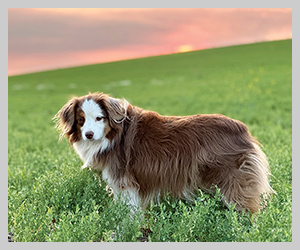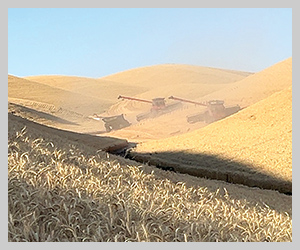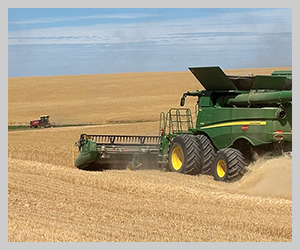Getting seed in the ground Low-till drill demonstration takes place in Franklin County
2025November 2025
By Trista Crossley
Editor
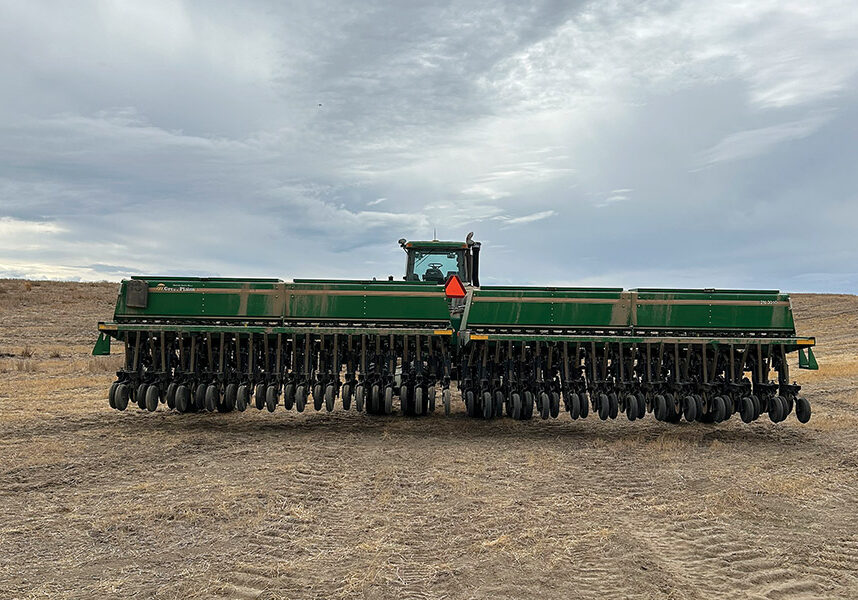
In early October, Grassl Farms in Franklin County was a hive of activity as more than 100 growers gathered to learn about low-till and direct seeding methods and see several drills in action.
The low-till drill demonstration was organized by Kara Kaelber, district manager of the Franklin Conservation District (FCD); Kim Brunson, executive director of the Pacific Northwest Direct Seed Association (PNDSA); and Andrea Cox, conservation coordinator for the Washington Association of Wheat Growers (WAWG). Additional support was provided by the Natural Resources Conservation Service (NRCS). The Bank of Eastern Washington sponsored a BBQ lunch.
“We had a phenomenal grower turnout, especially considering how busy growers are right now seeding their winter crops. I appreciate that they stepped away from their fields and took the time to attend,” said Cox. “This event would not have been possible without the partnership between WAWG, PNDSA, FCD, and NRCS. I’m hopeful we can bring more of these events to growers across Eastern Washington.”
The event began with a panel of growers who introduced themselves and talked about their experience with low-till and direct seeding. Devin Moon from Benton County said he seeds some wheat shallowly and some more deeply, with different drills, at his farm in the Horse Heaven Hills. Rob Dewald from Adams County said he’s played with a lot of different drills and recommended crop rotations. Jeff Shawver from Franklin County said he went to direct seeding about five years ago, using NRCS funds to help purchase equipment. He typically starts seeding early and doesn’t go deep with his seed. So far, his yields have at least matched the county average of 40 bushels per acre. Stacy Kniveton from Franklin County said he is still “newish” to dryland agriculture and direct seeding. Luke Van Hollebeke, also from Franklin County, said he is “dabbling” in later seeding and is trying to control mare’s tail (a weed).
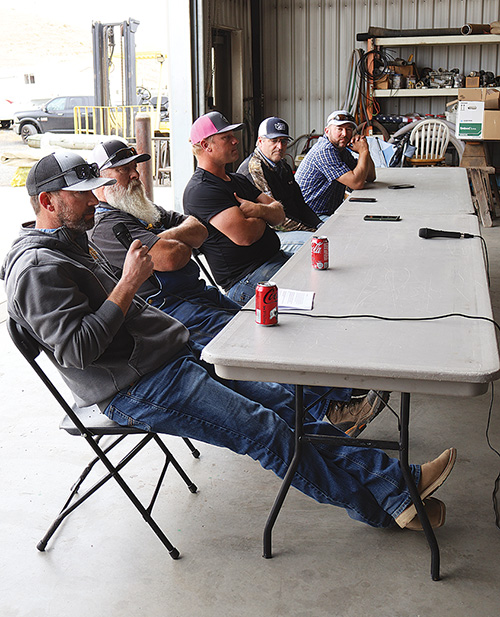
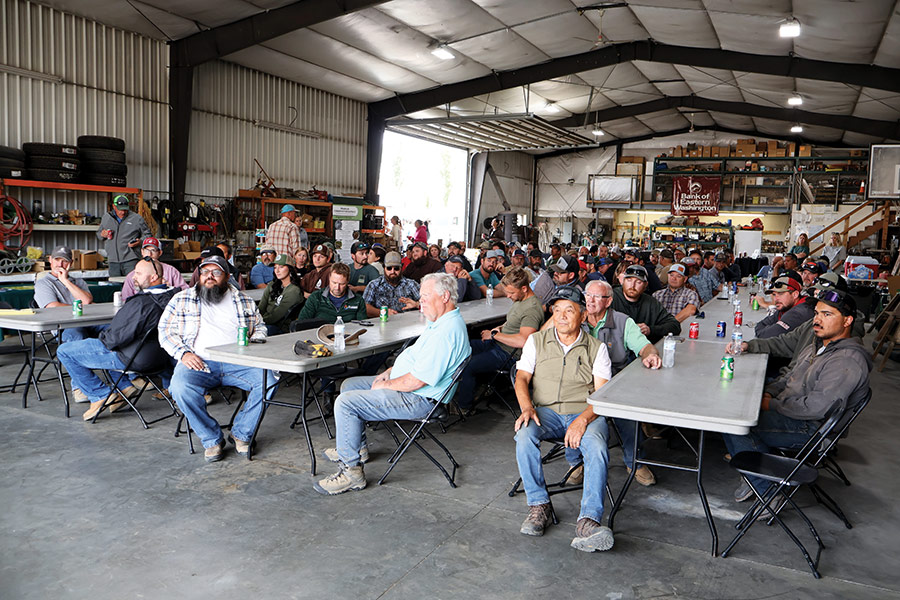

Questions that were asked of the panel included:
• Residue management: What has worked or not worked? Moon recommended spreading the residue as evenly as possible. He said if the stubble reaches a certain threshold, he will mow it before seeding. Dewald recommended learning to drive a combine — getting a laugh out of the crowd — and not leaving residue higher than the row spacing. Shawver said he uses a chopper and will spot mow if necessary before seeding. He also said header height to drill is important. Van Hollebeke said he is still learning how high to leave stubble.
• What are some of your weed control strategies? Moon said he’s tried just about everything, but ammonia sulfate seems to work the best overall, although he is also having issues with mare’s tail. Moon uses a Weed-It, calling it a great tool but that it can be frustrating. Dewald said manual methods of weed control may be necessary to control mare’s tail, and he recommended getting at it while it is young. He uses drones to scout his fields and then spot sprays as necessary.
• What are some of the changes from going to low-till and direct seeding that can be quantified? Shawver said he’s able to take soil samples with a 3-foot probe without issue, and there’s generally moisture all the way to the top. Van Hollebeke said for him, it’s hard not to be able to watch the wheat come up, that he has to wait for rain. He has also seen a savings in manpower hours. Moon said it was about three years after moving to no-till before he saw his yields respond. “There’s so much going on underneath the ground that you can’t wrap your mind around it,” he said. Dewald recommended buying a shovel, digging a hole, and “learning what’s going on under your feet.” He recommended spreading out fertilizer applications instead of applying it all at once, such as applying part of it in the fall and letting it leach over winter and then doing a foliar application in the spring.
For growers trying no-till and direct seeding, the panelists recommended seeding early so the seed is in the ground when rain hits.
“You don’t have to follow what you’ve always done. You’ve got options. Learn to play the game,” Dewald said.
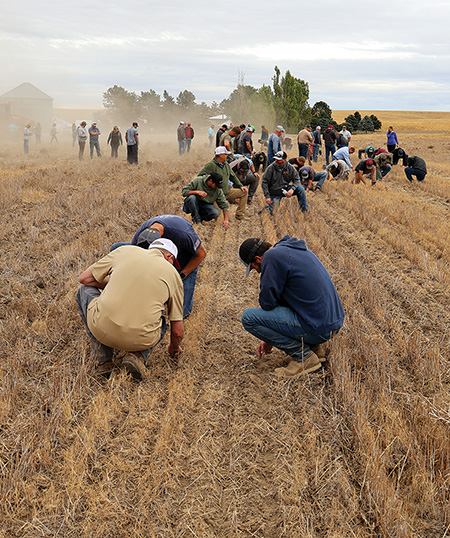
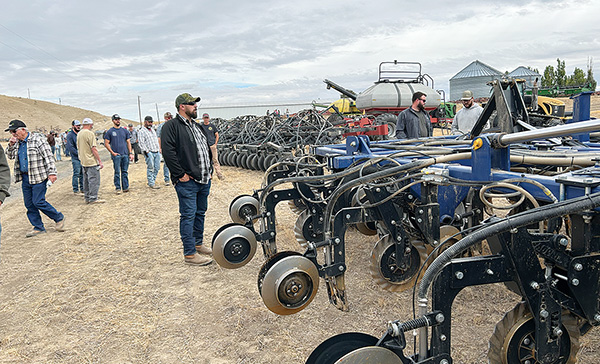
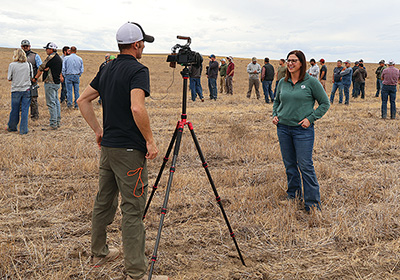
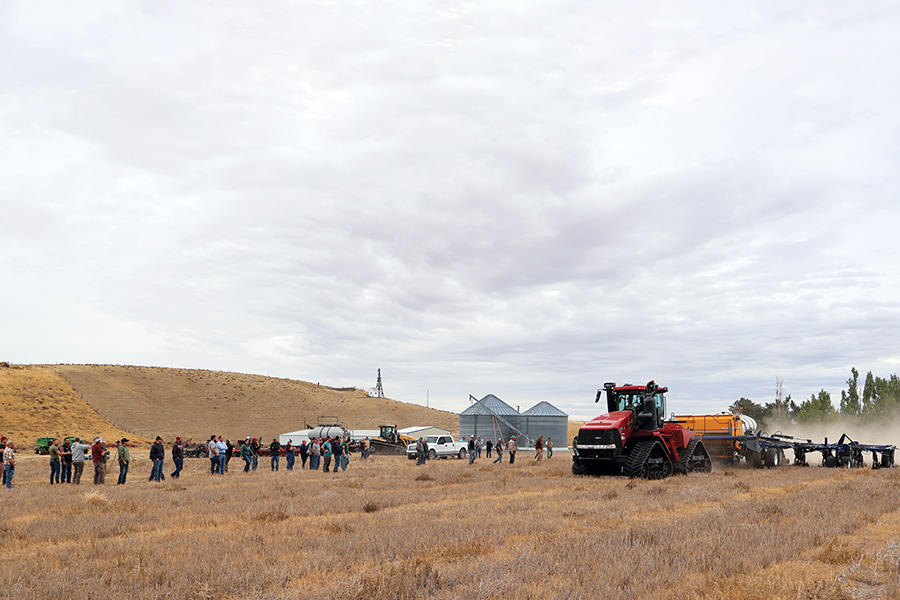
Kaelber said feedback indicated that growers appreciated the opportunity to talk to other growers who are using these type of drills
“The panel of low-till growers answering some hard questions about converting to low-till was very helpful for those considering the pros and cons of conversion,” she said. “I had two growers email me the next day saying they were interested in getting a low-till drill so they could start converting! In my mind, that proved our day was successful.”
Following the panel and lunch, growers were able to see four drills in action. Manufacturers represented were AGPRO, Case IH, John Deere, and Great Plains. The Franklin Conservation District will be monitoring the test strips throughout the winter.
“PNDSA was proud to participate in the drill demonstration in partnership with the Washington Association of Wheat Growers and the Franklin Conservation District. Any day we can spend in the field with farmers and ag professionals is a great day,” Brunson said. “This event drew a strong turnout of professionals who were excited to see direct seed drills in action and learn more about conservation-focused farming practices.”






